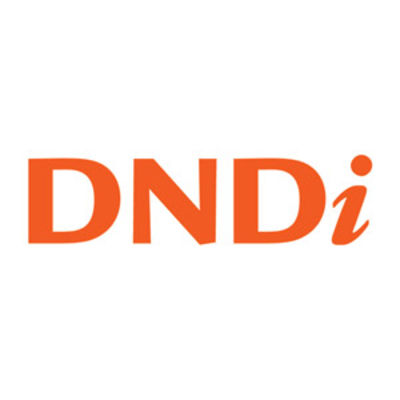预约演示
更新于:2025-05-07
Epichem Pty Ltd.
更新于:2025-05-07
概览
标签
皮肤和肌肉骨骼疾病
感染
其他疾病
小分子化药
疾病领域得分
一眼洞穿机构专注的疾病领域
暂无数据
技术平台
公司药物应用最多的技术
暂无数据
靶点
公司最常开发的靶点
暂无数据
| 疾病领域 | 数量 |
|---|---|
| 感染 | 1 |
| 排名前五的药物类型 | 数量 |
|---|---|
| 小分子化药 | 1 |
| 排名前五的靶点 | 数量 |
|---|---|
| Pfbc1(恶性疟原虫Pfbc1蛋白) | 1 |
关联
1
项与 Epichem Pty Ltd. 相关的药物靶点 |
作用机制 Pfbc1抑制剂 |
在研适应症 |
非在研适应症- |
最高研发阶段临床前 |
首次获批国家/地区- |
首次获批日期- |
100 项与 Epichem Pty Ltd. 相关的临床结果
登录后查看更多信息
0 项与 Epichem Pty Ltd. 相关的专利(医药)
登录后查看更多信息
5
项与 Epichem Pty Ltd. 相关的文献(医药)2023-12-13·Science Translational Medicine1区 · 医学
DNDI-6174 is a preclinical candidate for visceral leishmaniasis that targets the cytochrome bc
1
1区 · 医学
Article
作者: Chatelain, Eric ; Zuccotto, Fabio ; Deakyne, Julianna ; Breese, Karen J ; Feijens, Pim-Bart ; Maes, Louis ; Brunori, Gino ; White, Karen L ; Hendrickx, Sarah ; Van Pelt, Natascha ; González, Silvia ; Katneni, Kasiram ; Chemi, Giulia ; Heppell, Jacob ; Islam, Rafiqul ; Shackleford, David M ; Zulfiqar, Bilal ; Wall, Richard J ; Castañeda-Casado, Pablo ; Lyon, Jonathan J ; Camino, Isabel ; Wyllie, Susan ; Patil, Rahul ; Crighton, Elly ; Caljon, Guy ; Matheeussen, An ; Avery, Vicky M ; Braillard, Stéphanie ; Charman, Susan A ; Standing, David ; Yardley, Vanessa ; Chen, Gong ; Lee, Given ; Martinez Martinez, Maria S ; Marco, Maria ; Carvalho, Sandra ; Keenan, Martine ; Abbott, Michael
2020-12-01·European Journal of Medicinal Chemistry1区 · 医学
Re-evaluating pretomanid analogues for Chagas disease: Hit-to-lead studies reveal both in vitro and in vivo trypanocidal efficacy
1区 · 医学
Article
作者: Riley, Jennifer ; Thompson, Andrew M ; Cornwall, Scott ; Keenan, Martine ; Read, Kevin D ; Avery, Vicky M ; O'Connor, Patrick D ; Francisco, Amanda F ; Sykes, Melissa L ; Chatelain, Eric ; Denny, William A ; Thompson, R C Andrew ; Charman, Susan A ; Perez, Catherine J ; Marshall, Andrew J ; White, Karen L ; Zulfiqar, Bilal ; Kelly, John M
2017-02-13·ChemistrySelect
Synthesis, Stereochemistry and Antiparasitic Activity of Derivatives of (4R)-4,6-Dihydroxy-N-methyl-1,2,3,4-tetrahydroisoquinoline
作者: Rattanajak, Roonglawan ; Cullen, Danica R. ; Chaplin, Jason ; Massera, Chiara ; Rohl, Andrew L. ; Mocerino, Mauro ; Kamchonwongpaisan, Sumalee ; Pengon, Jutharat
100 项与 Epichem Pty Ltd. 相关的药物交易
登录后查看更多信息
100 项与 Epichem Pty Ltd. 相关的转化医学
登录后查看更多信息
组织架构
使用我们的机构树数据加速您的研究。
登录
或

管线布局
2025年12月24日管线快照
管线布局中药物为当前组织机构及其子机构作为药物机构进行统计,早期临床1期并入临床1期,临床1/2期并入临床2期,临床2/3期并入临床3期
临床前
1
登录后查看更多信息
药物交易
使用我们的药物交易数据加速您的研究。
登录
或

转化医学
使用我们的转化医学数据加速您的研究。
登录
或

营收
使用 Synapse 探索超过 36 万个组织的财务状况。
登录
或

科研基金(NIH)
访问超过 200 万项资助和基金信息,以提升您的研究之旅。
登录
或

投资
深入了解从初创企业到成熟企业的最新公司投资动态。
登录
或

融资
发掘融资趋势以验证和推进您的投资机会。
登录
或

生物医药百科问答
全新生物医药AI Agent 覆盖科研全链路,让突破性发现快人一步
立即开始免费试用!
智慧芽新药情报库是智慧芽专为生命科学人士构建的基于AI的创新药情报平台,助您全方位提升您的研发与决策效率。
立即开始数据试用!
智慧芽新药库数据也通过智慧芽数据服务平台,以API或者数据包形式对外开放,助您更加充分利用智慧芽新药情报信息。
生物序列数据库
生物药研发创新
免费使用
化学结构数据库
小分子化药研发创新
免费使用
